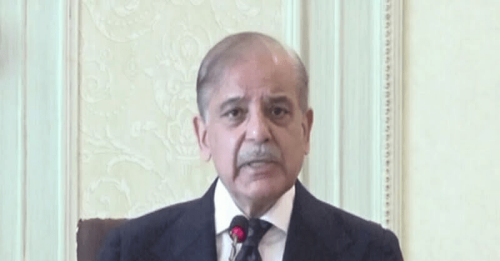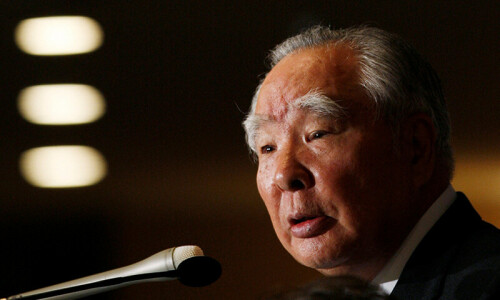 Fuel prices in Pakistan are heavily subsidised. Oil is bought at international market prices and sold within the country at a lower fixed price. The intention is to shield the domestic prices from the volatility of international oil market.
Fuel prices in Pakistan are heavily subsidised. Oil is bought at international market prices and sold within the country at a lower fixed price. The intention is to shield the domestic prices from the volatility of international oil market.
This article argues that the benefits of this policy may not outweigh the economic/social losses associated with the policy for several reasons.
First, fuel subsidies distort the relative prices of goods and services and prices no longer serve the purpose of efficient allocation of resources.
Second, the efficacy of fuel subsidies in shielding the economy from international supply shocks is uncertain particularly if the resultant budget deficit is monetised. Further, subsidies seem to be based on political expediency rather than economic considerations.
Finally, fuel subsidies prevent development of alternate and more efficient modes of transportation and lighting.
First, let us consider the proposed benefits of fuel subsidies. The foremost argument made is that subsidies provide relief to that ever elusive “common” man. A fuel subsidy has two different benefits. There is a direct benefit since the cost of petrol, transportation, lighting and energy are kept low. Then there is an indirect effect which prevents an associated rise in prices of all other goods due to a rise in transportation costs, power cost and input prices. At least for the direct effect, it has been shown that in many countries the benefit of the subsidy is highest for high income groups. Incidentally, Pakistan is an outlier in this research where the share of subsidy is highest for the lowest income groups.
The other perceived benefit of fuel subsidy is price stability. The fluctuations in international oil markets are supposed to be dampened by the fuel subsidy. A casual look at the data suggests that the policy has been successful, for example from January 1998 oil prices have increased by nearly 500 per cent while prices in Pakistan only rose by 70 per cent. On the other hand, a correlation of 0.96 suggests that domestic prices and international oil prices move in the same direction. Clearly, fuel subsidies have been able to absorb part of the oil shock but at what cost?
The first argument against fuel subsidy is that since fuel is a pervasive input, it distorts prices throughout the economy. It can also make business less efficient since firms can make the same (or higher) profits as international competitors despite using less efficient (more expensive) capital (inputs). As businesses get used to the subsidy like our businesses have, they will never be able to compete in international markets.
Similarly, by not passing the prices through, the government is not allowing any change in energy consumption pattern. While it is true that fuel demand is inelastic in the short run, many studies have shown that in the long run oil demand is elastic. After the two oil shocks, businesses in industrialised countries opted for more efficient technologies. Similarly, we are not letting consumer search for other modes of transportation or lighting. For example, higher energy cost may induce consumers to opt for energy saver light bulbs despite the higher cost.
Now let us consider the fiscal impact of an oil subsidy. With a dramatic rise in oil prices observed recently, the government has to make stark choice if it wants to continue the subsidies. Either, let its deficit rise or cut its other expenditures.
Since most current expenditure as well as defence and interest payments are sacrosanct, the axe generally falls on the development budget or social spending such as education and health. The government could also decide to loosen its fiscal stance i.e. increase the budget deficit. This has to be financed either by selling assets or domestic/international borrowing. The government has generally opted for domestic borrowing.
Now in order to keep interest rates low (most likely to keep a check on interest payments) the government has resorted to short-term borrowing for the State Bank of Pakistan. This is a textbook story of direct central bank borrowing leading to increase in money supply which results in inflation. So the two choices are either higher inflation or cuts in development and social spending. Both of these would hurt the “common” man.
The policy of subsidising fuel while allowing inflation through central bank borrowing may still be making sense if the resultant general price level increase is lower than the inflation resulting from the direct and indirect effects of oil price increase. But this is an open research question.
Also recognising the fact that there maybe some households which have no other alternative and fuel price hikes would be an unbearable burden, the government could implement a targeted subsidy to provide relief to vulnerable households which will not be as distortionary.
The fuel subsidy has become a political tool rather than an economic policy instrument to keep inflation low. The previous government kept oil prices low due to political expediency. The need is to depoliticise this issue and link oil prices to international oil prices with an independent body which makes decisions based on economic considerations.
Finally, fuel subsidies prevent development of alternate modes of transportation or energy. Most advanced economies (with the exception of US), tax gasoline more heavily and instead subsidise public transportation. For example, Norway has one of the highest gasoline prices in the world although it is a net exporter of oil. Subsidy reduces the incentives to explore alternatives.
Is it not possible that the “common” man would benefit more if instead of spending money on oil subsidies, some of that money was used to develop a mass transit systems in major cities? For example, the money saved could be used to promote freight transport by rail rather than trucks. Rail transportation has been shown to be much more fuel efficient as compared to road transportation. Similarly, the money saved from reducing subsidies could be used to invest in alternate sources of energy like wind, solar and coal based power.
It is clear that there are compelling arguments both for and against fuel subsidies. This article has argued that the benefits are outweighed by the social/economic costs of subsidies. Further, it is not clear that the perceived benefits are realised because subsidy expenditure leads to either development budget cuts or inflation both of which hurt the common man.
The problem of fuel subsidies is not a new problem but let us hope that this government has the strategic vision to address this issue by making an independent body responsible for oil price setting, linking oil prices to international oil prices (both on the way up and down), implementing a programme of targeted fuel subsidies and increasing public investment in mass transit and rail freight.















































Dear visitor, the comments section is undergoing an overhaul and will return soon.